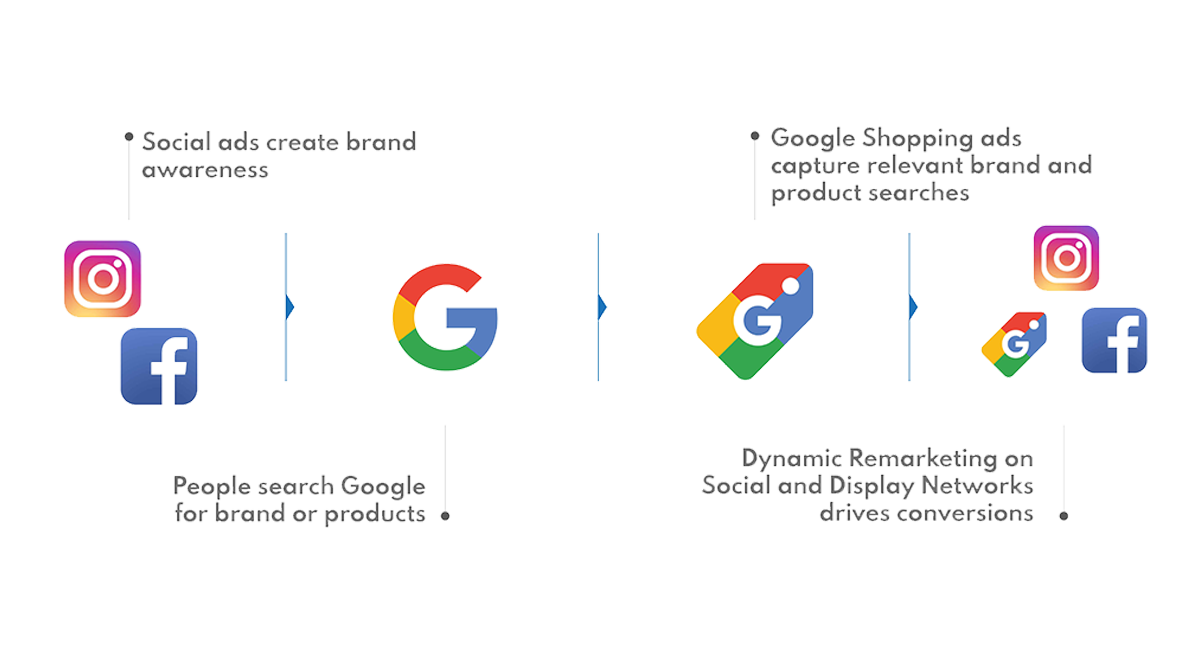Meta Ads for Traffic - Google Ads Conversions

In the world of digital marketing, a multi-platform approach is often the most effective. This blog post explores a powerful strategy: using Meta Ads to drive initial traffic and boost your search engine ranking (SERP), then capturing that warmed-up traffic with highly targeted Google Ads for conversions. Think of it as a two-pronged attack, maximising your reach and ROI.
Phase 1: Igniting the Spark with Meta Ads (Traffic & SERP Boost)
Meta platforms (Facebook, Instagram, etc.) excel at reaching broad audiences and generating interest.
They're perfect for the initial stages of your marketing funnel. Here's how to leverage them:
- Targeted Awareness Campaigns: Use Meta's robust targeting options to reach your ideal customer profile. Focus on demographics, interests, behaviors, and even custom audiences based on your existing customer data.
- Engaging Content: Create visually appealing ads that capture attention and pique interest. Think eye-catching images, short videos, and compelling copy that highlights the value proposition of your product or service.
- Brand Building: Focus on building brand awareness and creating a buzz around your brand. Don't be overly salesy in this phase. Instead, focus on providing valuable content, telling your brand story, and fostering engagement.
- Driving Traffic to Your Website: Direct your Meta ad traffic to relevant landing pages on your website. These landing pages should provide more information about your offerings and encourage visitors to explore further.
The SERP Boost Effect:
While Meta Ads don't directly influence Google's ranking algorithm, the traffic they generate can indirectly contribute to improved SERP. Increased website traffic, particularly from engaged users, can signal to Google that your website is relevant and valuable. This can lead to higher rankings over time, especially when combined with other SEO efforts. Think of it as building "social proof" that Google recognises.
Phase 2: Converting the Interest with Google Ads (Capturing the Demand)
Now that you've generated interest and warmed up your audience with Meta Ads, it's time to capture those potential customers who are actively searching for solutions like yours. This is where Google Ads shines:
- Targeted Search Campaigns: Focus on keywords that your target audience is likely to use when searching for your products or services. Use a combination of broad, phrase, and exact match keywords to maximise your reach and relevance.
- Remarketing Campaigns: Implement remarketing campaigns to target users who have previously visited your website (likely from your Meta Ads). These users have already shown an interest in your brand, making them more likely to convert.
- Highly Relevant Ad Copy: Craft ad copy that speaks directly to the user's search intent. Highlight the benefits of your offerings and include a clear call to action.
- Optimised Landing Pages: Ensure your landing pages are optimised for conversions. They should be relevant to the user's search query, easy to navigate, and include a clear form or call to action.
The Synergy:
The beauty of this strategy lies in the synergy between the two platforms. Meta Ads introduce your brand to a wider audience and drive initial traffic, while Google Ads capture the demand generated by Meta and convert that traffic into paying customers. This creates a powerful feedback loop:
- Meta Ads: Generate awareness, drive traffic, and boost SERP indirectly.
- Google Ads: Capture warmed-up traffic, convert leads, and generate ROI.
- Increased Website Traffic (from Meta & Google): Further strengthens your SERP.
Key Considerations:
Tracking and Measurement: Implement robust tracking mechanisms to monitor the performance of both your Meta and Google Ads campaigns. Track key metrics like website traffic, conversion rates, cost per acquisition, and return on ad spend.
- Budget Allocation: Allocate your budget strategically between Meta and Google Ads. Consider your campaign goals and target audience when determining your budget split.
- Consistent Messaging: Ensure consistent messaging across both platforms. Your brand voice and value proposition should be clear and consistent, regardless of where your audience encounters your brand.
- A/B Testing: Continuously test and optimise your campaigns on both platforms. Experiment with different ad creatives, targeting options, and landing page variations to see what performs best.
Conclusion:
By combining the reach and engagement of Meta Ads with the targeted precision of Google Ads, you can create a powerful marketing strategy that drives both traffic and conversions. This dynamic duo allows you to build brand awareness, capture demand, and maximise your ROI. Remember to track your results, optimise your campaigns, and adapt your strategy as needed. The world of digital marketing is constantly evolving, so continuous learning and improvement are essential for success.
